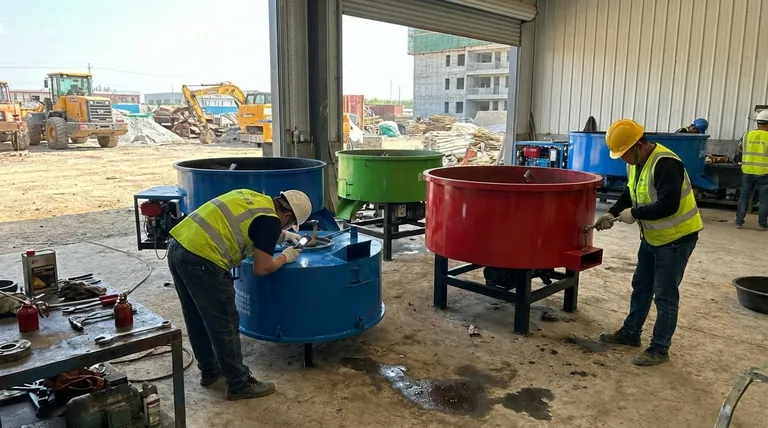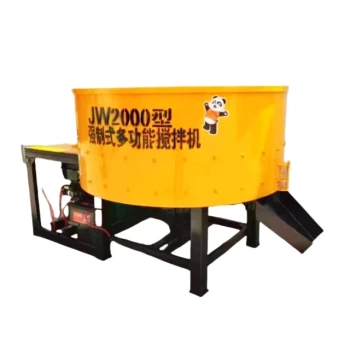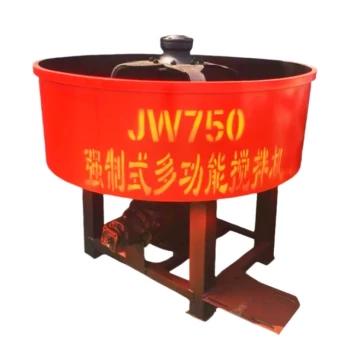At its core, construction equipment maintenance is the essential process of inspecting, servicing, and repairing the machinery used on a job site. The goal is to ensure every piece of equipment operates not just efficiently, but also with the highest degree of safety for your team.
Maintenance is not an expense to be minimized; it is a strategic investment in uptime, safety, and the long-term value of your most critical assets. Shifting from a "fix it when it breaks" mindset to a proactive strategy is fundamental to modern construction management.

Why Maintenance is a Core Business Function, Not Just a Cost
Neglecting maintenance has direct and often severe consequences on project timelines, budgets, and safety records. A well-structured maintenance program is a profit-driver disguised as a cost center.
Maximizing Uptime and Productivity
A single equipment failure can halt an entire workflow, creating costly delays. Uptime is the most critical metric for any piece of construction machinery.
Regular maintenance directly translates to higher equipment availability, ensuring that your projects stay on schedule and your labor force remains productive.
Ensuring Operator and Site Safety
Malfunctioning equipment is one of the leading causes of construction site accidents. Failures in hydraulic systems, brakes, or structural components pose a direct threat to life.
A rigorous maintenance protocol is a non-negotiable part of any comprehensive safety program. It protects your operators and everyone on the site.
Extending Equipment Lifespan and Value
Heavy machinery represents a significant capital investment. Like any asset, its value degrades over time, but neglect accelerates this process dramatically.
Consistent, documented maintenance not only extends the functional life of the equipment but also significantly increases its resale value.
The Three Tiers of Equipment Maintenance
Maintenance strategies are not one-size-fits-all. They exist on a spectrum from reactive to highly proactive, each with its own cost and benefit profile.
Reactive Maintenance (The "Fix it When it Breaks" Approach)
This is the most basic strategy, where repairs are performed only after a component or machine has already failed.
While it requires no upfront planning, it is often the most expensive approach due to unplanned downtime, collateral damage to other parts, and the high cost of emergency repairs.
Preventive Maintenance (The Scheduled Approach)
Preventive maintenance involves performing routine service and inspections at regular intervals, based on time or usage hours. This includes tasks like oil changes, filter replacements, and lubrication.
This strategy is designed to catch and fix potential issues before they lead to a major failure, improving reliability and making costs more predictable.
Predictive Maintenance (The Data-Driven Approach)
This is the most advanced tier, leveraging technology like telematics, sensors, and data analysis. The system monitors equipment performance in real-time to predict when a component is likely to fail.
Maintenance is then scheduled precisely when needed, minimizing both unnecessary service and unexpected breakdowns. This approach offers the highest level of efficiency.
Understanding the Trade-offs
Choosing the right maintenance strategy requires an objective look at the costs, risks, and operational realities of your business.
The Cost of Proactive vs. Reactive
A proactive strategy (preventive or predictive) has higher planned costs in the short term for parts, labor, and technology.
However, a reactive strategy almost always results in higher total costs over the equipment's lifespan due to extreme downtime, lost productivity, and expensive emergency call-outs.
The Risk of Over-Maintenance
While less common, it's possible to service equipment too frequently in a preventive system. This can lead to unnecessary labor costs and part consumption.
The goal is to follow manufacturer recommendations and adjust based on operating conditions, not to simply service for the sake of it.
The Challenge of Implementation
Effective maintenance requires more than just a wrench. It demands skilled technicians, disciplined record-keeping, and a management team that enforces the schedule.
Without consistent execution and documentation, even the best-laid plans will fail to deliver results.
Making the Right Choice for Your Goal
Your maintenance strategy should align directly with your operational priorities and the nature of your fleet.
- If your primary focus is risk mitigation on a short-term project: A reactive approach is dangerously insufficient; implement a strict preventive maintenance schedule based on manufacturer guidelines.
- If your primary focus is predictable budgeting and long-term reliability: A comprehensive preventive maintenance program is your essential foundation, ensuring consistent performance and controlled costs.
- If your primary focus is maximizing the return on a large, modern fleet: Integrating predictive maintenance using telematics data offers the ultimate advantage in uptime and operational efficiency.
Ultimately, treating equipment maintenance as a proactive pillar of your operation is the clearest path to safer, more profitable project execution.
Summary Table:
| Maintenance Strategy | Key Focus | Best For |
|---|---|---|
| Reactive | Fixing equipment after it breaks | Minimal planning, high-risk tolerance |
| Preventive | Scheduled service to prevent failures | Predictable budgets, long-term reliability |
| Predictive | Data-driven predictions to optimize service | Maximizing uptime of large, modern fleets |
Ready to Build a More Profitable and Safer Operation?
Stop letting unexpected equipment failures derail your projects and budget. A proactive maintenance strategy is your key to maximizing uptime, ensuring operator safety, and protecting your valuable machinery investment.
GARLWAY specializes in providing durable construction machinery and the expert support you need. From robust winches and efficient concrete mixers to high-capacity batching plants, our equipment is engineered for performance and longevity.
Let us help you implement the right maintenance plan. Our team can provide guidance tailored to your specific fleet and operational goals.
Contact GARLWAY today for a consultation and discover how our machinery and expertise can drive your success.
Visual Guide

Related Products
- Ready Mixer Machine for Construction Ready Mix Machinery
- Commercial Construction Mixer Machine for Soil Cement Mixing Concrete
- Auto Concrete Cement Mixer Machine New
- Construction Products Concrete Plant Machine Mixing Concrete Mixer
- HZS90 Large Multiquip Concrete Mixers for Construction
People Also Ask
- What safety considerations are important for concrete mixer operation? A Guide to Proactive Risk Management
- What is the average lifespan of a concrete mixer? Maximize Your Equipment's Lifespan & ROI
- What was significant about Roscoe Lee's 1934 concrete mixer design? Pioneering Modular Construction Equipment
- When was the first concrete mixer developed and by whom? Discover the 1900 Breakthrough
- What is the function of a concrete mixer machine? Achieve Consistent, High-Quality Concrete for Your Projects



















